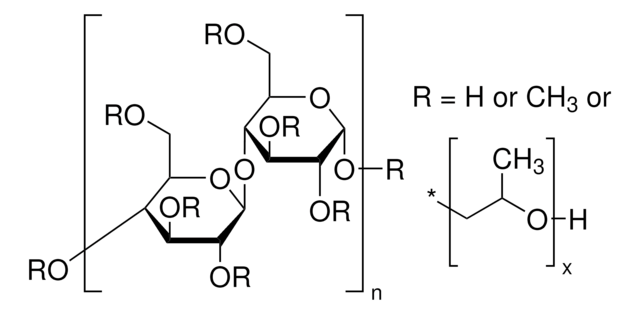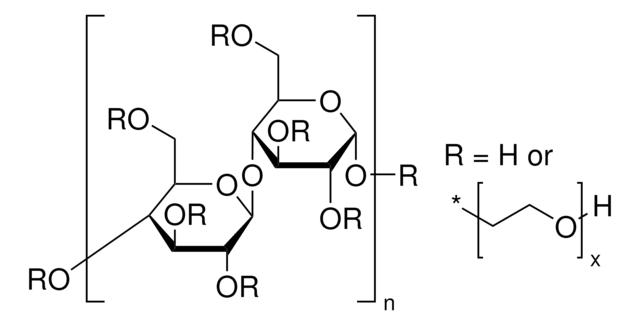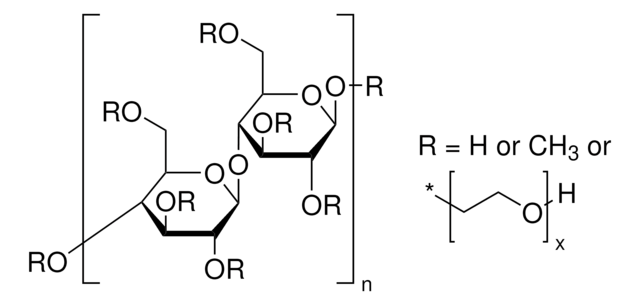435007
Hydroxypropyl cellulose
average Mw ~80,000, average Mn ~10,000, powder, 20 mesh particle size (99% through)
Sinónimos:
HPC
About This Item
Productos recomendados
descripción
biological oxygen demand (BOD) 14,000 ppm
Formulario
powder
temp. de autoignición
752 °F
mol peso
average Mn ~10,000
average Mw ~80,000
impurezas
<5 wt. %
tamaño de partícula
20 mesh (99% through)
pH
5.0-8.5
aceite mineral de tensión interfacial
12.5 dyn/cm, 0.1 wt. % in H2O (vs. mineral oil)
viscosidad
250-800 cP, 10 wt. % in H2O(25 °C)(lit.)
solubilidad
H2O: insoluble (above 45 °C)
polar organic solvents: soluble
densidad
0.5 g/mL at 25 °C (lit.)
cadena SMILES
N(C)(C)c1cc(c(cc1)C(N)CC)C
InChI
1S/C12H20N2/c1-5-12(13)11-7-6-10(14(3)4)8-9(11)2/h6-8,12H,5,13H2,1-4H3
Clave InChI
RRHXDYJWVYFMKV-UHFFFAOYSA-N
¿Está buscando productos similares? Visita Guía de comparación de productos
Descripción general
Aplicación
Código de clase de almacenamiento
11 - Combustible Solids
Clase de riesgo para el agua (WGK)
WGK 1
Punto de inflamabilidad (°F)
Not applicable
Punto de inflamabilidad (°C)
Not applicable
Equipo de protección personal
Eyeshields, Gloves, type N95 (US)
Elija entre una de las versiones más recientes:
¿Ya tiene este producto?
Encuentre la documentación para los productos que ha comprado recientemente en la Biblioteca de documentos.
Los clientes también vieron
Nuestro equipo de científicos tiene experiencia en todas las áreas de investigación: Ciencias de la vida, Ciencia de los materiales, Síntesis química, Cromatografía, Analítica y muchas otras.
Póngase en contacto con el Servicio técnico


